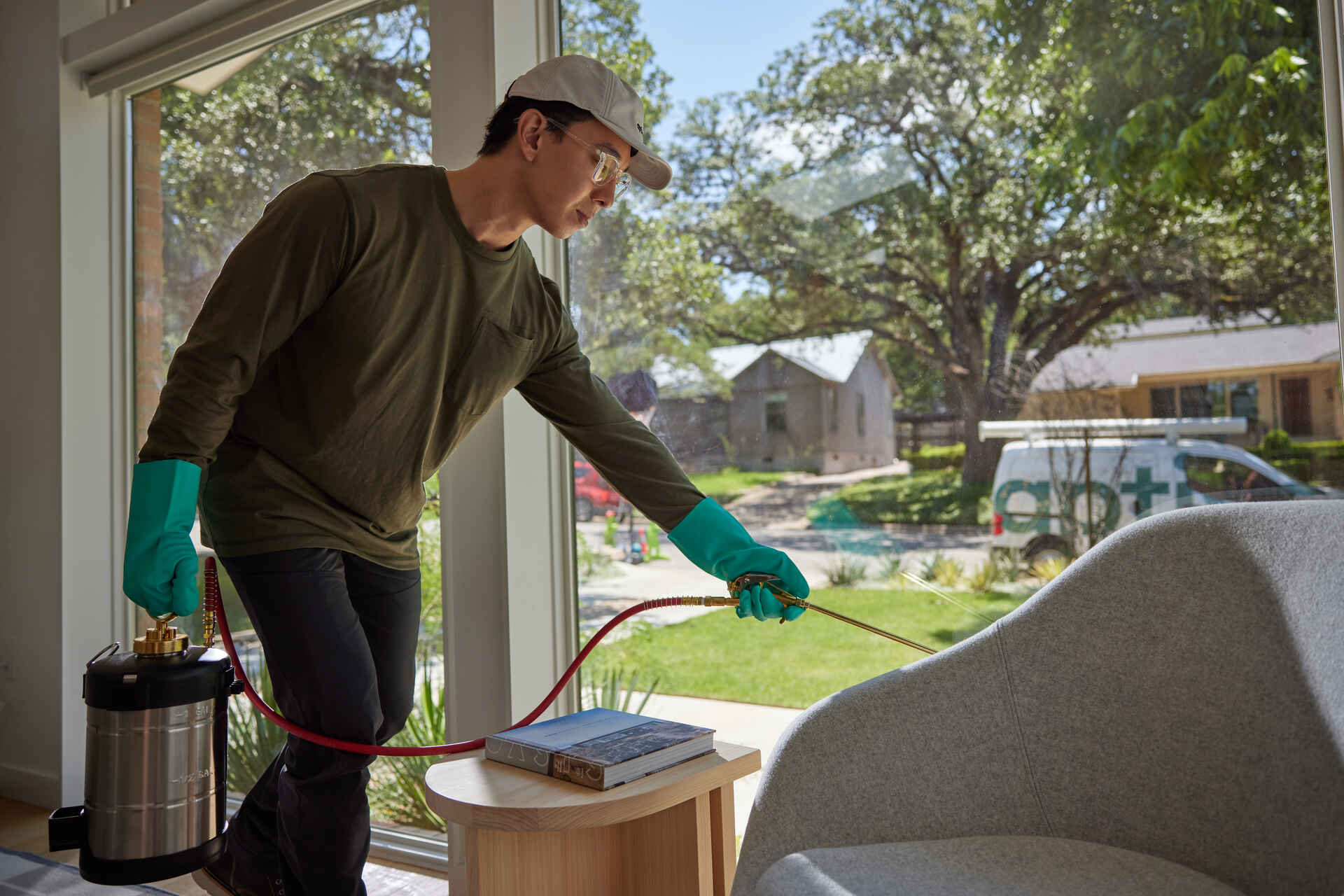Bed Insect Treatment Breakdown: Contrasting Chemical Vs. Non-Chemical Solutions
In the world of bug control, particularly when managing the relentless concern of bed pests, the choice in between chemical and non-chemical therapy remedies can be an essential one. Both strategies supply unique advantages and drawbacks, influencing aspects such as performance, safety and security factors to consider, and total expense. By analyzing the nuanced details of each technique, a clearer understanding of which course to go after in attending to a bed pest infestation can be acquired.
Effectiveness of Chemical Treatments
Chemical therapies for bed bug problems have been widely identified for their rapid and potent efficiency in eliminating these insects. When considering the performance of chemical therapies, it is important to understand that they can offer a detailed and fast service to a bed bug problem.
In addition, chemical treatments have the advantage of offering residual impacts, indicating that they can remain to get rid of bed bugs even after the first application. This residual action is especially valuable in combating any type of potential re-infestations. In addition, the quick action of chemical treatments can bring relief to individuals facing extreme bed pest invasions, permitting them to regain control of their home promptly.
Security Problems With Chemical Solutions
One crucial element that calls for careful factor to consider when using chemical options for bed bug treatment is making sure the security of occupants and the atmosphere. While chemical therapies can be effective in eradicating bed pests, they might posture dangers otherwise managed effectively. One of the main security issues with chemical solutions is the possible damage they can cause to human health. Direct exposure to specific chemicals made use of in bed bug treatments can bring about respiratory system problems, skin irritation, or various other negative responses, particularly in individuals with pre-existing problems or sensitivities. In addition, improper application or dosage of chemical pesticides can lead to poisonous residues lingering in the cured location, posturing lasting wellness threats to passengers.
Moreover, the ecological influence of chemical services is one more substantial consideration. Some pesticides utilized in bed pest therapies may be dangerous to valuable pests, wild animals, and environments if they seep right into the dirt or water supply. It is vital to use chemical therapies carefully, following security standards, and thinking about much less hazardous options to mitigate these threats and ensure the safe and effective management of bed bug problems.
Advantages of Non-Chemical Strategies
Considering the possible safety and security problems and ecological effect associated with chemical remedies for bed insect treatment, exploring non-chemical techniques presents an appealing choice with several distinct advantages. Non-chemical approaches offer a more secure option for houses, particularly those with individuals, family pets, or youngsters sensitive to harsh chemicals. These techniques remove the risks of exposure to harmful materials, lowering the potential for adverse wellness results. Additionally, non-chemical treatments are eco-friendly, as they do not ways to treat termites add to air or water pollution, making them a lasting choice for bug control.
Furthermore, non-chemical solutions can be efficient in targeting bed bugs, consisting of hard-to-reach areas where chemical treatments may not pass through - A1 bed bug treatment in charlotte. Approaches such as heat therapy, vacuuming, heavy steam cleaning, and bed mattress encasements her explanation offer complete eradication without the usage of damaging chemicals.
Limitations of Non-Chemical Treatments

Furthermore, non-chemical therapies often call for numerous applications to attain successful obliteration. This can be taxing and might not always guarantee total removal of all bed insects and their eggs, specifically in surprise or hard-to-reach locations.
Moreover, the success of non-chemical therapies greatly relies upon appropriate implementation and thoroughness, which can be testing for people without professional competence. Insufficient application of non-chemical techniques may result in insufficient removal, causing persistent invasions and the requirement for additional treatments.
As a result, while non-chemical treatments have their advantages, it is important to acknowledge these restrictions and consider them when determining one of the most efficient approach for taking care of bed bug problems.
Cost Contrast: Chemical Vs. Non-Chemical Options
Offered the constraints connected with non-chemical therapies, a crucial facet to assess in the context of bed insect administration is the price contrast in between chemical and non-chemical alternatives. Chemical treatments generally involve the application of insecticides by professionals, which can vary from $250 to $900 per area, relying on the severity of the infestation and the size of the area to be treated. On the other hand, non-chemical therapies like warmth treatment or steam can be much more pricey, with costs ranging from $1,000 to $6,000 for an entire home. While the preliminary cost of chemical therapies might appear reduced, numerous therapies may be required to totally eliminate the problem, possibly boosting the overall expense. On the other Check This Out hand, non-chemical alternatives might supply a much more sustainable and environment-friendly option, although they can be cost-prohibitive for some people. Ultimately, when thinking about the expense of bed insect treatment alternatives, it is essential to evaluate the ahead of time costs against the efficiency and long-lasting sustainability of the picked method.
Verdict

Taking into consideration the potential security issues and ecological effect connected with chemical options for bed bug treatment, discovering non-chemical techniques offers an encouraging alternative with a number of unique advantages.Provided the restrictions associated with non-chemical treatments, an essential facet to assess in the context of bed pest administration is the expense contrast between chemical and non-chemical choices. In comparison, non-chemical treatments like heat treatment or heavy steam can be a lot more pricey, with prices ranging from $1,000 to $6,000 for a whole home. While the initial expense of chemical therapies might appear reduced, multiple treatments might be required to totally get rid of the problem, possibly enhancing the total cost.In verdict, when contrasting chemical and non-chemical bed insect therapy alternatives, it is essential to consider efficiency, security, benefits, restrictions, and expense.